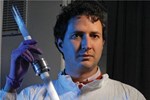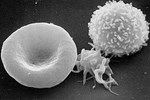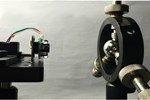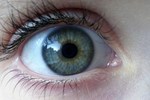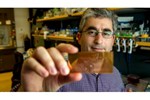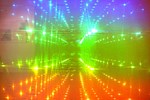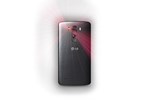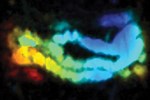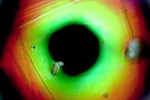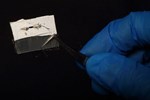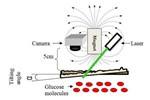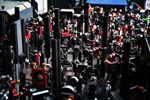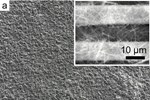ARTICLES BY JOEL LINDSEY
-
Laser Beam Technique Developed For Drawing Blood8/4/2014
With research support from the University of Central Florida, medical device startup NoNeedles Venipuncture is working to develop a new device that uses lasers instead of needles to collect blood samples.
-
Can A Blood Sensitivity Test Reliably Detect Cancer?8/1/2014
Researchers at England’s University of Bradford have created a simple blood test that they say could provide a reliable means of detecting a number of different types of cancer.
-
Wearable Device Could Provide Early Detection Of Diabetes-Related Complication7/30/2014
A research team in Taiwan that includes scientists from National Taiwan University Hospital and National Chiao-Tung University has created a device called a pupillometer designed to measure certain conditions in the wearer’s pupil in order to predict the early onset of a complication related to diabetes.
-
Heat-Seeking Missile Tech Used For Malaria Diagnosis7/22/2014
Researchers at Monash University and the University of Melbourne have devised a way to use hardware from heat-seeking missiles to produce a test for early and reliable malaria diagnosis. In the project, researchers used a special infrared sensor called a focal plane array (FPA), which was originally created for use in Javelin anti-tank missiles, to seek out the presence of malaria in a blood sample. When the FPA was used in conjunction with an infrared imaging microscope to test a blood smear, it successfully detected the infrared signature from fatty acids in the malaria parasites, enabling researchers to consistently identify malaria-infested blood at early stages of infection.
-
Can Retinal Imaging Predict Early-Stage Alzheimer's?7/21/2014
A group of researchers may have discovered a way to use a noninvasive retinal imaging device to reliably predict Alzheimer’s disease years before its actual onset.
-
Plasmonic, Microchip-Based Test Could Improve Diabetes Diagnosis7/17/2014
Researchers at the Stanford University School of Medicine have created a new microchip that uses nanotechnology to diagnose type-1 diabetes.
-
Is Holography The Future Of Medical Imaging?7/14/2014
Researchers at Tel Aviv University (TAU), in Israel, have developed new holography technology that could dramatically improve and expand the possibilities of medical imaging.
-
LG's New Smartphone Boasts Laser-Guided Auto Focus7/14/2014
The photographic capabilities of LG’s newest smartphone, the G3, have made headlines recently thanks to the phone’s use of laser-assisted focusing technology.
-
New “Nano-juice” Could Improve Gastrointestinal Imaging7/10/2014
A team of researchers has created a substance deemed “nano-juice” that could provide real-time imaging of the human intestines.
-
Nanophotonics: The Key To A New Generation Of Medical Diagnostic Devices?6/20/2014
Researchers at the University of Cambridge are working to develop new medical diagnostics devices that harness the potential power of nanophotonic, a field of physics concerned with the interactions between light and interacts with materials as small as a billionth of a meter.
-
HP Developing New Type Of Computer Based On Silicon Photonics, Memristors6/16/2014
Researchers at Hewlett-Packard (HP) are working to develop a new form of computer architecture that brings together advancements in nanoscale manufacturing and fiber optics to dramatically change the way computers operate.
-
New Terahertz Detector Design Could Revolutionize Medical Imaging6/16/2014
Researchers from Rice University, Sandia National Laboratories, and the Tokyo Institute of Technology have used carbon nanotube structures to create a new terahertz detector that could significantly improve medical imaging.
-
New Biometric Wristwatches Use Light To Measure Vital Signs6/12/2014
In two separate projects, researchers are working to create biometric watches that use light to non-invasively and accurately measure important vital statistics — such as blood glucose levels, hydration levels, and pulse.
-
Scientists Find Way To Reliably Teleport Data6/6/2014
Scientists at the Kavli Institute of Nanoscience at the Netherlands’ Delft University of Technology say they have discovered a way to reliably and consistently teleport data between two quantum bits over a distance of up to three meters.
-
Multispectral Light Sensor Could Allow Surgeons To 'See' Inside Tissue5/28/2014
Researchers at the University of Surrey have created a new type of light sensor that they say could allow for the creation of low-cost cameras capable of generating high-quality medical images.

